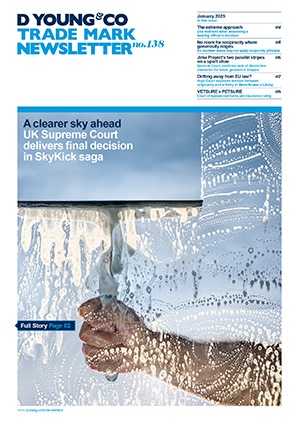Tick, Tock, TikTok: metronomically descriptive?
This case is a High Court appeal against the decision of a UK Intellectual Property Office (UKIPO) hearing officer to invalidate a registration for TikTok, emphasising the importance of claiming priority when you can, as well as discussing the criteria for considering complementarity between goods and services.
TikTok International Ltd owned a class 42 registration for TIK TOK covering the “compilation of information relating to information technology”, dating from November 2018.
TikTok Information Technologies UK Ltd, the operator of the well-known internet platform on which members of the public can post short videos on any topic, owned a prior registration for the identical mark, TIK TOK. This resulted from a cloned EU mark, with priority claimed from an application in India, being filed less than one month before the registration in question. Without this priority claim the case would have been doomed.
The earlier right was relied upon for a cancellation action under the Trade Marks Act 1994. The scope of the specification of the earlier mark was relevant and central to many of the submissions made during the appeal:
Class 9
“application software; application software for smart phone; downloadable computer software applications; downloadable smart phone application (software)”;
Class 38
“providing access to search services of smart phone applications; providing access to peer-to-peer (P2P) sharing services”; and
Class 41
“electronic publication of information on a wide range of topics”.
The appellant contested the hearing officer’s decision to cancel their mark based on their belief that the officer’s decision was wrong on three fronts:
- the earlier mark TIK TOK was distinctive to a high degree
- there was similarity between any of the relevant goods and services
- there was a likelihood of confusion.
Distinctiveness of TIK TOK
The appeal didn’t start particularly well for the appellant. They argued that TIK TOK represents a widely-used onomatopoeic term, referring to the operation of a metronome or clock, and thus was descriptive of a service providing a platform for posting short videos of musical and/or dance performances on the Internet.
The respondent pointed out that this argument hadn’t been raised in the first instance and therefore doing so on appeal was inadmissible. The judge clearly didn’t want to be seen to be favouring her most used social media app and consequently allowed the argument. However, the judge did conclude that the question of distinctiveness is not determined simply by a broad inquiry about the nature of the business of one of the parties. Further, merely because it might be evocative of the sound of a metronome or clock this didn’t detract from the distinctiveness of the mark. In addition, the judge noted that the clearly deliberate misspelling is an element of distinctiveness: “Common sense tells you that the earlier mark is inherently distinctive, and highly so”.
Similarity of the goods and services
The appellant perhaps had a stronger case for appealing on the second limb of their claim. However, they rather went off at a tangent in discussing the complementarity of pictures and nails, used to hang them on a wall.
The judge confirmed that the comparison was effectively information gathering v the dissemination of information. She upheld the principles set by Arnold LJ’s summary in Sky v Skykick:
- Goods and services can still be held similar even if the classes do not overlap.
- Complementarity is just one assessment to be made when considering similarity.
The judge did have some difficulty with the conclusion in the first instance regarding the comparison with the services in class 38 but held that “this is not a case where I should simply substitute my own decision.”
Using the appellant’s nail analogy the judge then applied it to their coffin by confirming that information is generally gathered together for the purpose of disseminating it in some form, and therefore would be complementary and thus similar.
Unsurprisingly, the judge concluded that with TikTok being highly distinctive there existed a likelihood of confusion notwithstanding any low degree of similarity between the goods and services.
In short
The definition of complementarity continues to be broadened from the original decision in Boston Scientific in 2006.
An appeal from a decision at the UKIPO will be an uphill task with the tribunal slow to overturn a decision unless a material error has been shown.
When filing new applications, claim priority where and when you can.
